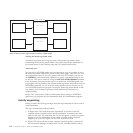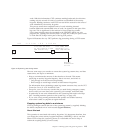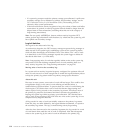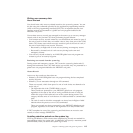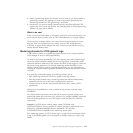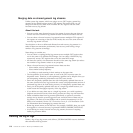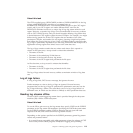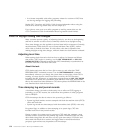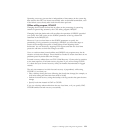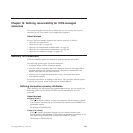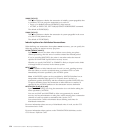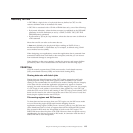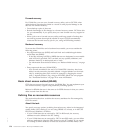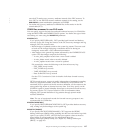
v In a format compatible with utility programs written for versions of CICS that
use the log manager for logging and journaling.
See the CICS Operations and Utilities Guide for more information about using the
LOGR SSI to access log stream data, and for sample JCL.
If you plan to write your own utility program to read log stream data, see the
CICS Customization Guide for information about log stream record formats.
Effect of daylight saving time changes
Many countries operate a policy of adjusting clocks by one hour at the beginning
and end of summer to effect what is commonly referred to as daylight saving.
These time changes are also applied to the local time held in computers. Generally,
most hardware (TOD) clocks are set to Greenwich Mean Time (GMT), with an
offset value to indicate local time. It is this offset value that is adjusted when
making daylight saving time changes, while the hardware clock remains unaltered.
Adjusting local time
When setting clocks forward or back an hour to adjust for Summer and Winter
time while a CICS region is running, use the CEMT PERFORM RESET or EXEC CICS
PERFORM RESETTIME command to ensure that CICS immediately resynchronizes its
local time with that of the MVS TOD clock.
About this task
CICS obtains and stores the local time offset at start up, and when the CEMT
PERFORM RESET command executes. Use the CEMT PERFORM RESET command
immediately whenever you change the system date or time-of-day while CICS is
running, to ensure that the correct local time is used by all CICS functions,
including the API. Whenever an application program issues an EXEC CICS ASKTIME
command, CICS obtains the current time from the MVS TOD clock, and modifies
this by the stored local time difference. CICS then updates the EIBTIME field in the
exec interface block with the local time.
Time stamping log and journal records
A local time change, forwards or backwards, has no effect on CICS logging or
journaling, or on CICS restarts, but could affect the operation of utility programs
such as DFHJUP.
CICS time-stamps the data it writes to the system log as follows:
v System log block headers are time-stamped with both the machine clock (STCK)
value and local time
v System log records are time-stamped with the machine clock (STCK) value only.
For general logs, in addition to time-stamping as in system logs, CICS also
includes local time in the journal records.
During a restart, for system recovery purposes, CICS reads the youngest—most
recently written—record from the primary log stream. Thereafter, CICS uses only
direct reads using block ids and does not rely upon time stamps. CICS also uses
direct read with block ids to retrieve the logged data for transaction backout
purposes, again without any dependence on time stamps.
120 CICS TS for z/OS 4.1: Recovery and Restart Guide



